It’s not uncommon to see split orchid leaves, which can happen for a variety of reasons. You can read more details about the causes, as well as the possibilities of correcting the situation, in this article.
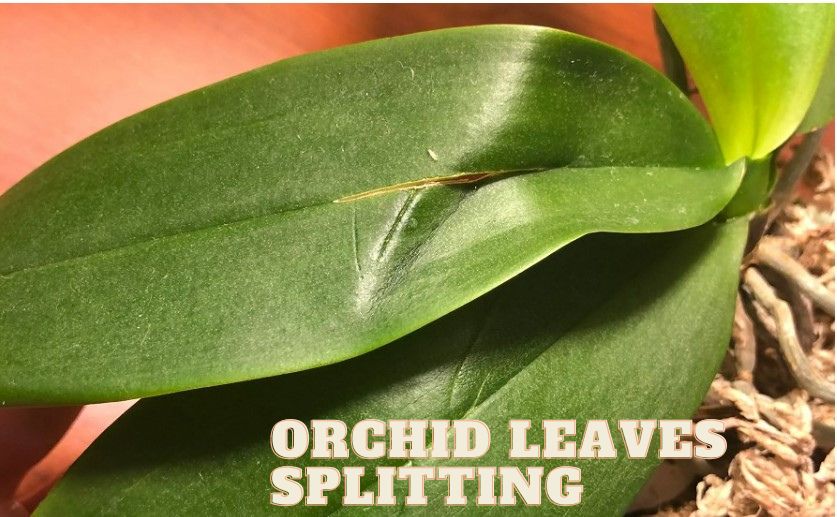
Why Do Orchid Leaves Split?
Every gardener who closely monitors the development of the plant can notice the split orchid leaves. This can happen for various reasons.
Leaves can break, often due to improper human care.
You can understand why the orchid leaf split if you read the information below.
Many people ask, why are the leaves on my plant splitting? After all, not always the reason lies in the mismatch of care requirements.
Unstable watering
If you alternate watering, it may cause the split orchid leaves. The orchid leaf plates are very dense. This is due to the high internal turgor pressure. It is due to this that the shape of the sheet plate is maintained.
If you stop watering the plant for a while, the orchid leaf plate begins to wrinkle, which leads to a quick wilt. If watering is restored afterward, the leaves immediately swell to regain their lost shape. Due to the change in tension inside the sheet, orchid leaves splitting occurs.
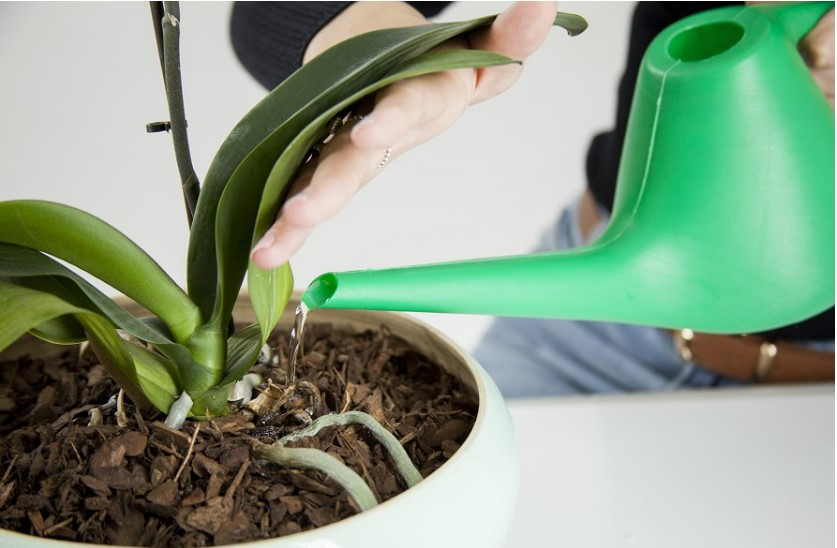
Insufficient or irregular watering
You may notice split orchid leaves if they do not have enough water. It is important to stick to one correct irrigation regime so that the leaves retain their strength and resilience.
If the bushes are in a room where the humidity is low, you should additionally install a humidifier.
Alternatively, pebble trays can be used.
Direct contact with the sun
Some orchids cannot be kept in places where direct sunlight predominates. After all, this can provoke difficulties in their development. In particular, you grow indoor varieties of a flower.
The orchid’s leaves, under the influence of sunlight, can be covered with burns, or even dry out. Because of this, they crack in the center.
Therefore, plants should not be placed on window sills on the south side of the house in the warm season.
Leaf splitting because of human or pet exposure
If there are children or animals in the house, because of their curiosity, they can damage orchid leaves. After all, they do not know that the plant is very fragile. It is enough to grab the sheet a little so that it begins to crack. Animals can damage leaves by scratching them with their claws.
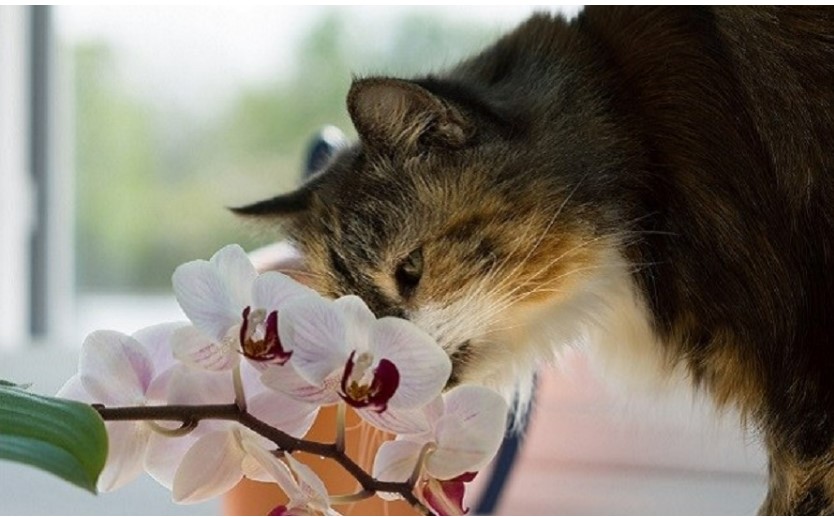
Fallen bush
Often there are situations when a person accidentally knocks over a flowerpot with an orchid from the windowsill. As a result of a fall, the plant may be injured. Leaves can not only become covered with cracks but even fall off altogether. It all depends on how strong the fall was.
Leaf splitting because of mechanical damage
It is very important to correctly combine orchids and other plants on the windowsill. It is important that they do not touch because otherwise the phalaenopsis orchid leaves are injured.
You should also carefully trim. The better you treat the bushes, the more beautiful they will be.
Used plants
Often, friends or relatives give orchids for overexposure and do not take them away. If a similar situation happened to you, carefully inspect the orchid plant. There is always a chance that it is already damaged.
This does not mean that you treated the plant badly. The reason will be hidden from the previous owner of the flower.

Differences in vertical splits and horizontal splits
It is important to pay attention to the direction of split orchid leaves. This allows you to understand the real reason for this situation. Often it is the vertical splits that can be seen. In most cases, split vertically is associated with improper care.
Horizontal splits are formed as a result of an injury caused by a fall or other factors. There are times when the horizontal split is the result of active and excessive direct sunlight.
What parameters should you pay attention to?
If the orchid has split leaves, you should carefully examine them to better determine the cause of what happened. It is important to inspect the plant for diseases and infections.
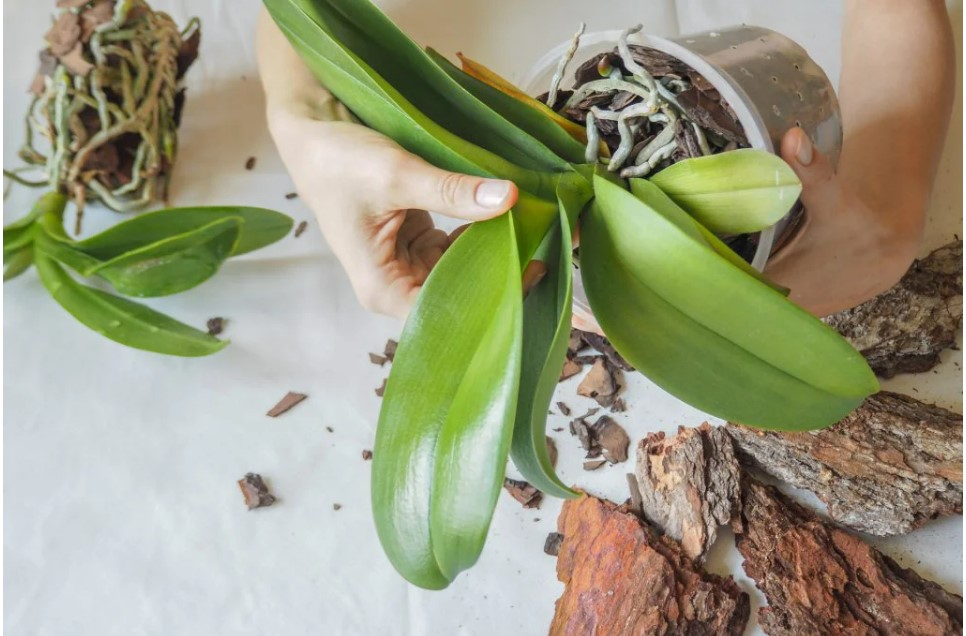
Signs of sunburn on the orchid’s leaves
Phalaenopsis orchids need good lighting; however, it is best to avoid direct sunlight. Otherwise, at first, the leaves begin to turn yellow, after which they become covered with dark brown or white spots. After a few days, they turn black.
If sunburn has been received and the orchid leaves have begun to wither, you have the opportunity to restore them. To do this, you need to put in a shaded area of the house and wait a few months. If burns and cracks began to appear, then it is already impossible to reverse the process. You have to remove the affected leaves.
Spots on the orchid leaves
When examining a plant, it is important to carefully examine the condition of the inside of the leaf. Often you can see various spots on it. Often they are white, yellow, or brown, or a combination of these shades. If the spots were caused by a fungal infection, their size constantly increases.
Over time, the outer part of the orchid leaf plate is also affected. If you notice spots on an orchid, you have to cut off the affected areas. The plant may have to be isolated if other flowers grow nearby. This prevents the spread of infection.
To prevent a fungal infection, it is recommended to spray the bush regularly.
However, you need to understand that an incorrectly performed procedure is very dangerous because it can only aggravate the problem. It is best to use chemicals for spraying.
If you plan to go chemical-free, you can mix some baking soda in the water. This contributes to the death of bacteria. If you use purchased products, choose substances that contain copper or sulfur octanoate. This gives you the best result.
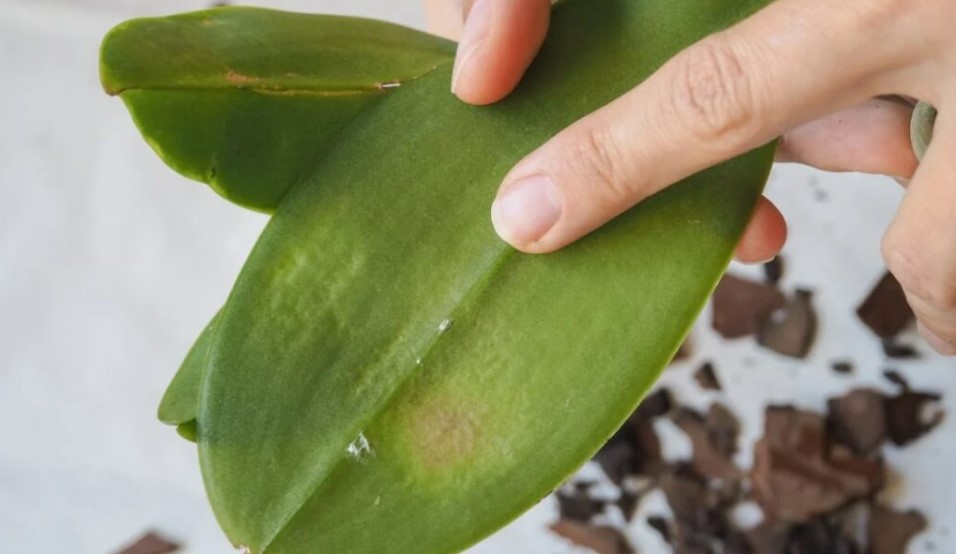
Bacterial brown spots on orchid’s leaves
Often, orchid bushes are affected by bacterial brown spots. This indicates the presence of a disease – bacterial spotting.
If the disease develops, the orchid leaves begin to rot over time.
The damage is a little damp because the plant has been watered too much.
The affected area will be slightly sunken. If you do not start treatment, the spots will increase in size. Especially if you continue to over-water the bushes.
Unfortunately, the disease cannot be cured. You have to cut off the affected orchid leaves.
After removing the affected foliage, the bushes should be treated with special preparations that are designed for bacterial diseases. You can also use special fungicides that are based on copper and sulfur.
If you prefer to work with natural products, give preference to neem oil. In action, it practically does not differ from baking soda.
Take 1 gallon of warm water and add 1 teaspoon of liquid soap, 2.5 teaspoons of oil, and 1 tablespoon of baking soda to it.
All components must be thoroughly mixed. The prepared solution should be sprayed on the bushes, paying special attention to the orchid leaf plates.
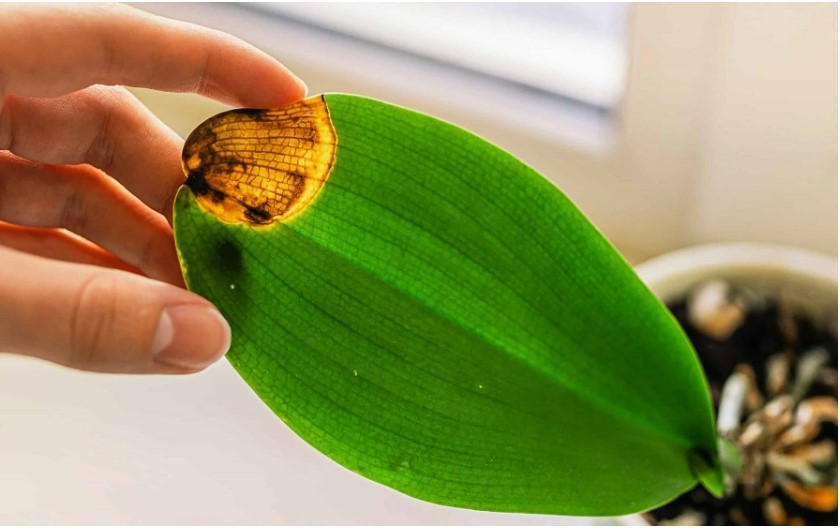
Black rot
If this infection develops, the orchid leaves will rot completely. At first, the leaves acquire a brown-purple hue, after which they will completely turn black. In this case, the orchid leaves are excessively soft.
It is necessary to start treating black rot on time so that the infection cannot reach the root system of the plant. Otherwise, it is impossible to save the plant, and it will completely die.
If black rot has not yet struck the roots, you first need to cut off the split leaves that have turned black. You need to work with sharp tools so that the plant does not experience stress.
Try to cut a little more than just the black areas. This prevents an early return of the infection and the occurrence of split leaves.
Can split leaves be fixed?
Many people wonder, how do you fix a torn orchid leaf? The diseases that need immediate treatment were listed above. If you notice the split orchid leaf on the bush, it does not pose such a great danger to the plant. However, they can significantly spoil its beauty.
To restore, draw a scapular around the division. You need to work with sterile instruments so as not to introduce bacteria or fungal infections. Cut off the leaves where the tear is. Afterward, fungicide treatment can be carried out to prevent infection of the open wound.
Quite often, you can hear the question, can a broken leaf heal? It is allowed to leave a sheet to be sprinkled with cinnamon powder.
It helps prevent infection. If you delete a sheet, do it. However, keep an extra 0.5 inch of the healthy part of the orchid plant.

How to prevent orchid leaves splitting?
It is important not only to fight the orchid leaves splitting but also to prevent their occurrence. There are a few tips to prevent leaf splits:
- Place flower containers in a place where children and animals cannot reach them.
- Water the plants correctly and on schedule.
- Handle bushes carefully. No need to shake or throw them.
- Put the plant in a place that has the right lighting and humidity. This prevents leaf damage.
- Feed your bushes regularly to keep them strong and healthy. Then there is less chance that the leaves will crack.
Do I need to cut the split orchid leaf?
If phalaenopsis orchid leaves split, you must cut off them. This presses the bush more attractive. You need to work with sterile tools so that viruses and bacteria do not penetrate inside. Make an incision in the leaf at the base. To do this, it is better to use a thin and sharp blade.
They differ in the accuracy of work. If split leaves don’t bother you, you can leave them.
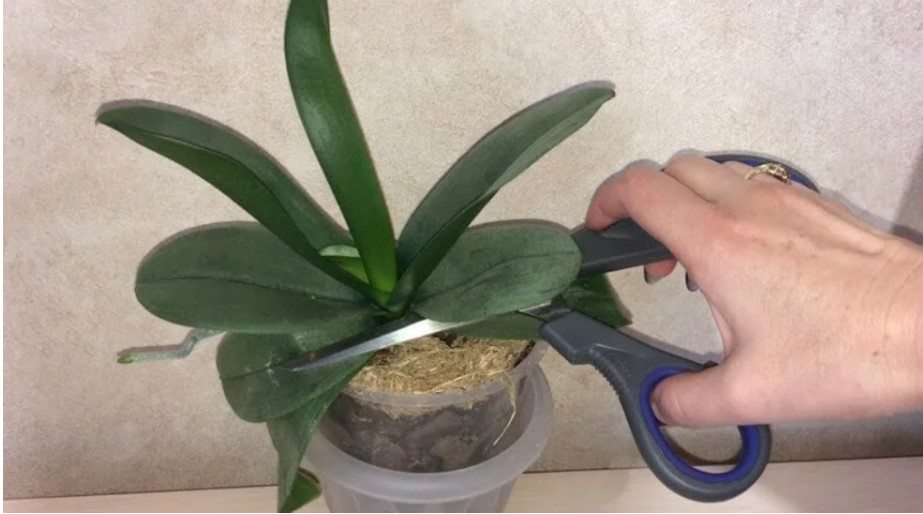
Results
As you can see, orchid leaves split for various reasons. However, to prevent such situations, it is recommended to care for the bushes properly, as well as to prevent them from falling and being injured.
How do you fix a torn orchid leaf?
To fix a torn orchid leaf, use clean and sterilized tools to trim off the affected portion of the leaf. If the tear is close to the base, remove the entire leaf. Place the plant in a stress-free environment and away from direct sunlight. Allow the plant to heal on its own and avoid handling the plant until the wound has completely healed.
Can a broken orchid leaf heal?
If an orchid leaf is only slightly broken or torn, it may heal on its own without any intervention.
What are the signs of an Underwatered orchid?
Underwatered orchids may have wrinkled or shriveled leaves that appear dry and brittle. The leaves may also turn yellow or brown and drop prematurely. The roots may appear dry and shriveled instead of firm and white. The potting medium may also be extremely dry and dusty.
What does an unhealthy orchid look like?
An unhealthy orchid may have wilted, yellow, or brown leaves that are mushy, limp, or dry. The orchid may also have stunted growth, a lack of new growth, or a failure to bloom. The roots may be mushy or dry and may have an unpleasant odor. The potting medium may appear moldy, dusty, or waterlogged.
Can I cut wrinkled orchid leaves?
No, you should not cut wrinkled orchid leaves unless they are completely dead and dry. Wrinkled leaves may be a sign of dehydration, so it’s important to address the underlying issue by adjusting your orchid’s watering and humidity levels. If the leaves are still green and pliable, they are still capable of producing energy for the plant through photosynthesis.
What to do with sun damaged orchid leaves?
If your orchid leaves are sun-damaged, you can remove the affected leaves with sterilized pruning shears. You can also move the orchid to a spot with indirect sunlight to prevent further damage. To prevent sun damage in the future, it’s important to provide your orchid with the appropriate amount of light for its species and to gradually acclimate it to brighter light if you need to move it to a new location.
Can orchids go 2 weeks without water?
Some orchids can go two weeks without water, but this depends on the specific orchid species, its growing conditions, and the humidity levels in the environment. It’s important to monitor your orchid’s watering needs by checking the potting medium’s moisture level and the plant’s overall health.

